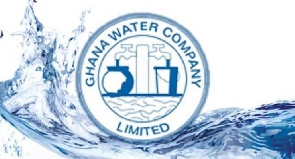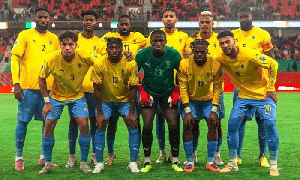There is a story published at citinewsroom.com attributed to Eric Seth Atiapah, Chief Manager, GWCL: "The Ghana Water Company in the Central Region has cut its production by 30 percent at the Sekyerehemang Headworks as a result of galamsey activities along the banks of the River Prah. Although some communities in the region will be affected by the move, it is ready to argue its production with supplies from the Bremsu Headworks."
So, the GWCL in the Central Region has a challenge with water supply because of
galamsey and 30 percent capacity is lost, but it is ready to fill the gap with supply from elsewhere.
The challenge has been overcome; there is no water crisis in the Central Region. Agreed....?
There is another communication in town from the GWCL published on
opr.news, which is difficult to understand.
Part of the information reads, "Ghana Water Company Limited is advising
residents of Greater Accra and its surroundings to store ample water in their tanks and gallons to avoid potential shortages. Stanley Martey, Chief Manager of Public Relations and Communication, highlighted the necessity of water rationing due to the insufficient capacity of water treatment plants to meet the demands in the region."
In this second statement from the GWCL, it appears all residents in the Greater Accra Region are being ushered into another era of "Kufuor Gallon."
Residents in Greater Accra are scattered in 15 operational districts: Ga South, Ga East, Ga Central, Ga West, Ningo Prampram, Shai-Osudoku, Ada East, Ada West, La Nkwantanang Madina, La Dade Kotopon, Ledzokuku-Krowor to Adentan, Accra Metropolitan Area (AMA) to North Tongu, and finally Central Tongu.
Residents in these areas are expected to understand these terminologies meant for technical people, probably in the water industry.
Can someone help explain these terms to Ghanaians who are especially confused?
residents of Greater Accra?
The GWCL is alerting Greater Accra residents about imminent water shortages and
the need for them to take remedial measures to store water in tanks, gallons, etc. But is this all residents need to know?
Are we going back to President Kufuor's yellowish-gallons era (2001–2009),
where containers that could hold water despite their capacity were
dubbed Kufuor gallons?
The jargon "Kufuor gallon" was coined by J.J Rawlings and gifted to Agyekum
Kufour because of the water crisis that occurred during his time, even though it was not of his making.
Interestingly, Rawlings himself had a fair share of this nicknaming during his time.
Ghanaians born before the 1980s can never forget the period of deep curves around the collarbone as a result of drought, bushfires, food shortages, and long periods of starvation in most parts of the country.
As a legacy, Jerry John Rawlings had his "Rawlings chains," while John Agyekum Kufuor had his "Kufuor gallon."
And what about John Mahama? He got his "Mahama Camboo" corrupted form of "Mahama can do."
This was because Mahama was introducing new ideas and fixing a lot of
challenges; in education, health, introducing tricycles, restoring power and solving "Dumsor & he inherited; planning and execution of the Kpong Water Supply
Expansion Project and Accra Water Purchase Project, as well as the Accra
Seawater Desalination Plant to solve the perennial water shortages in the Greater Accra Region, thereby eliminating the "Kufuor gallons."
Today, "Dumsor" is back but the government is afraid to accept the situation as
"Dumsor" because of its connotations and sociopolitical implications. The term
"Dumsor" is now taboo for the Akufo-Addo/Bawumia government; the Electricity
Company of Ghana (ECG) has vehemently denied there is "Dumsor" and blatantly
refused to draw a "Dumsor" timetable to help the public even though a significant quantity of power generation was lost.
Ghanaians have lived under this load-shedding situation before and know its characteristics, so whether a schedule is drawn or not, the people know "Dumsor" is in full swing now. This is the first quarter of the year.
The situation could get worse as the nation grinds slowly and painfully towards
December 2024; and as the IMF is strangely attaching a new condition to the
passage of the LGBTQ+ bill as an excuse to refuse the disbursement of funds to
support the dying economy.
At the time of the water crisis during Kufuor's time, a terse notice was even put out by GWCL for residents to visit the GWC main office to buy "Kufuor gallon" for GH63 p3.
"SAVE WATER TO SAVE YOURSELF" was part of the notice.
At this point, is it not possible for the GWCL to come down to the level of the ordinary man and break down this technical jargon meant for the benefit of residents?
In a situation like this, Greater Accra residents would like to have explanations of the following, as they gave to residents in the Central Region:
How many water treatment plants do we have to serve residents in Greater Accra to date?
In addition, how many are incapacitated now, which has occasioned this water
rationing?
Furthermore, how many treatment plants are in good working condition to serve
residents?
Again, how much volume of water is lost? In the Central Region, residents are
30 percent of production and supply capacity are lost.
Also, why are broken-down treatment plants not repaired, That is, if we
broken down?
What solutions are available in the short, medium, and long term to alleviate the challenges?
Finally, how long is it going to take for the situation to be normalised?
Answers to these and many others are what Greater Accra residents need to know
and to guide them to make informed decisions to mitigate the effects of the system breakdown.
This situation requires a full statement from the GWCL to residents.
"Water rationing due to the insufficient capacity in water treatment" is the key. The reason embedded in the information is vague and open to many interpretations.
If it is the lack of spare parts to maintain the treatment plants, residents must know; if it is the unavailability of chemicals to treat the water, residents must be told.
If it is the effect of galamsey operations, let residents know.
If it is a lack of funds due to insufficient revenue, residents need to know.
If the source of water is dried up, residents must know.
If there is a sudden population explosion in the region, let residents know.
Normally, people are more likely to empathise with an organisation or a situation when the full facts surrounding the occurrence of a mishap are known.
Transparency is very key here.
Chief Manager, your communication to the public couldn't get through. Greater
Accra residents are waiting for you.
Please come again...
Water is life.
About George Kojo Yankah
He is a retired public relations practitioner.
An accredited member of the Institute of Public Relations (IPR)
He worked with the Social Security and National Insurance Trust (SSNIT) from 1991 to 2014
His field of expertise is public relations and communications.
Opinions of Wednesday, 20 March 2024
Columnist: George Kojo Yankah















